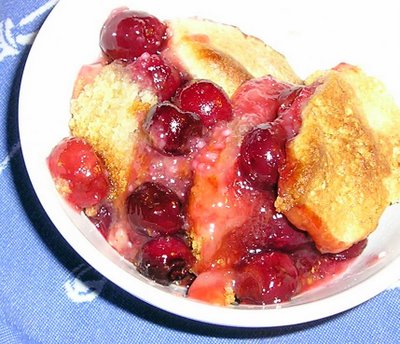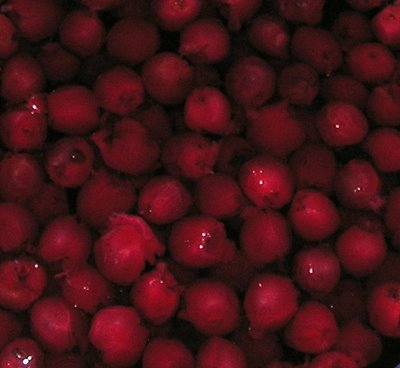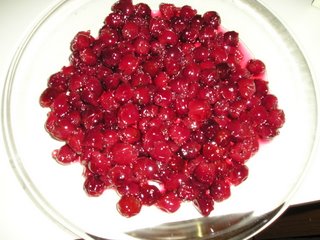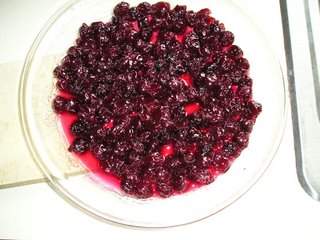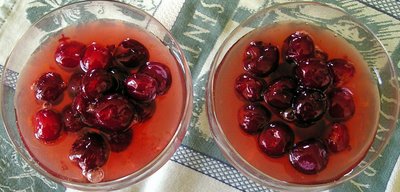The Wild Ones
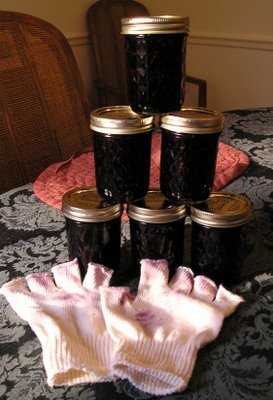
If you had been able to track me down this past Saturday afternoon at 3:30 (and that would have been very difficult: I took great care to make sure that I hadn't been followed), you would have found me in the middle of a dense blackberry thicket, dressed in heavy black jeans, a heavy flannel shirt over a heavy t-shirt, gloves with the fingertips missing, and a ball cap -- despite a temperature of about ninety degrees (in the shade, where I was not). It's possible that the first thing you would have noticed was that I completely drenched in sweat or that I was carrying around a bucket with just over a gallon of ripe blackberries in it, but it's much more likely that you would first have noticed that I was trash talking the blackberry canes. In the interest of not offending the more innocent of my readers, I will not repeat exactly what I said to the blackberry canes, but rest assured that they were so cowed by my brilliance that they could say nothing in response and had to resort to physical attacks.
Saturday was my second day of blackberry picking this year. I had gone to my usual picking grounds the evening before, when it had been much cooler, and had come away with four pounds of prime berries and the location of a much larger blackberry patch. This last information came from a woman who showed up to pick blackberries when I was about a pound-and-a-half into picking and who seemed very grateful that there was someone else around. As she was leaving, she told me how to get to the larger patch.
It takes a
That really is the best way to eat them, but when you can't stop yourself from liberating the plump beauties from their thorny environment and so end up with ten pounds of blackberries, you have to come up with other ways to use them.
I have very likely written here before that I am not normally a jam-making kind of guy. Jam making requires a great deal more patience and meticulousness than I normally have. You can't (or at least I can't; presumably things are different if you're Christine Ferber) just kind of make up the recipe as you go along. You have to be very careful with measurements and techniques and preparing your containers, whereas I prefer to wing pretty much everything I do in the kitchen. Still, when Saturday evening arrived, I found myself alone (V. is in Ethiopia doing some consulting) with a large quantity of berries that I had gathered that very afternoon, an ample supply of jelly jars, and a copy of Mes Confitures that I had bought a month or two previously on the recommendation of Lindy.
Ms. Ferber's recipe for wild blackberry jam is a two-day affair. It requires a relatively small amount of time and effort on the first day, an overnight maceration of the fruit, and the will to complete the whole process on day two. These were all things that I had or could trick myself into, so I went for it.
I should say up front that I'm not really thrilled with Mes Confitures as an introduction to the art of jam making. The recipes are very sketchy, and the introductory section on basic techniques is not much more detailed. With most sorts of cooking, I would find lack of detail to be not in the least intimidating, but I would recommend, if you're going to be jamming, that you find another book as an introduction to the technique and use Ms. Ferber's work as a source of ingredient lists and ideas. Her recipe for wild blackberry jam, for example, does not even tell you how much it will yield, and that's really something you need to know if you are having to wash and sterilize jars. You really can't be in the middle of putting your jam into jars and stop to sterilize a few more jars. I was making a double recipe of the jam (because I had so many berries), and I had no idea how many jars to prepare so I sterilized about a dozen half-pint jars as well as a single one-pint jar. In fact, the (doubled) recipe makes almost exactly eight half-pint jars of jam. The very last jar was not quite full, so I refrigerated it (after it had cooled) rather than relying on the seal to preserve it. If I had left a half-inch of headroom in each jar, I would have probably had eight full jars, but Ms. Ferber says that she fills her jars right to the top, so I left no more than an eight of an inch of space in the first seven jars.
Wild Blackberry Jam
4.5 pounds wild blackberries
3.5 pounds granulated sugar
The juice of 2 lemons
Remove any foreign matter from the blackberries, put them in a colander, and rinse them quickly. When they have drained, put them in a large pan along with the sugar and the lemon juice. Bring slowly to a simmer, stirring occasionally. Turn off the heat, let cool, pour into a glass or ceramic bowl, cover, and refrigerate overnight.
The next day, bring the mixture slowly to a boil. Cook, skimming carefully, until the mixture reaches 221 degrees. This will take roughly forever. Pour the mixture into sterilized jars and seal.
 The recipe sounds very simple, and on some level it really is, but in other ways it's very much not. Cooking jam for the first time is a bit of a nerve-wracking experience, particularly when you are using nearly a gallon of fruit that you really suffered (ok, it was fun suffering, but still) to gather. If you're going to try it, I recommend finding a good introductory text or, preferably, making your first batch with an experienced jam maker. I was fearful that I was doing something wrong because of the extremely long amount of time that it took for the jam to go from about 215 to 221 degrees, and I worried that I would burn the jam, which really would have been a damned shame.
The recipe sounds very simple, and on some level it really is, but in other ways it's very much not. Cooking jam for the first time is a bit of a nerve-wracking experience, particularly when you are using nearly a gallon of fruit that you really suffered (ok, it was fun suffering, but still) to gather. If you're going to try it, I recommend finding a good introductory text or, preferably, making your first batch with an experienced jam maker. I was fearful that I was doing something wrong because of the extremely long amount of time that it took for the jam to go from about 215 to 221 degrees, and I worried that I would burn the jam, which really would have been a damned shame.I worried a little less after I stuck a spoon into the big measuring cup that contained all of the gunk that I had skimmed off the bubbling surface of the jam. I reasoned that if the gunk tasted that good, the jam itself would have to turn out fine. (I ended up with over a cup of gunk. It was very good poured over vanilla ice cream.) And, indeed, it did. I tested some this evening with some good bread and butter, and it was splendid. It set well without being overly thick, and both the surrounding liquid and the whole berries tasted the way they should. I am overly proud of myself for being patient and careful, and I have a tremendous feeling of accomplishment when I look at my eight little jars of jam. I try not to remember that eight half-pints is really just two quarts, because that seems like not enough jam for the amount of work expended, but oh well.
Clearly jam making is something that I'm going to have to do a good deal more of. This will also require some research and some investment in equipment. I did not, for example, have a canning funnel, and I could not find one in any of the local supermarkets or housewares stores. I took a plastic funnel, tested it in boiling water to make sure it could stand relatively high heat, dragged it down to the basement, hacked off the bottom with a wood saw, and then shaved off the ragged ends with a sharp paring knife. It worked pretty well, but earlier today I ordered a canning funnel. My stockpot (which has a very heavy bottom) worked well enough for making jam, but I think that I might want to invest in a copper jam pan if I'm going to be doing this on a regular basis. I have to determine whether the 1/16-inch thick pans (not cheap, but affordable) are good enough or I have to lay out the cash for the 1/8-inch thick version, which is much not cheaper than the thinner version. I believe that I would be more willing to jam on a regular basis if I could get the faster evaporation that I would get from a 12-quart copper jam pan.

